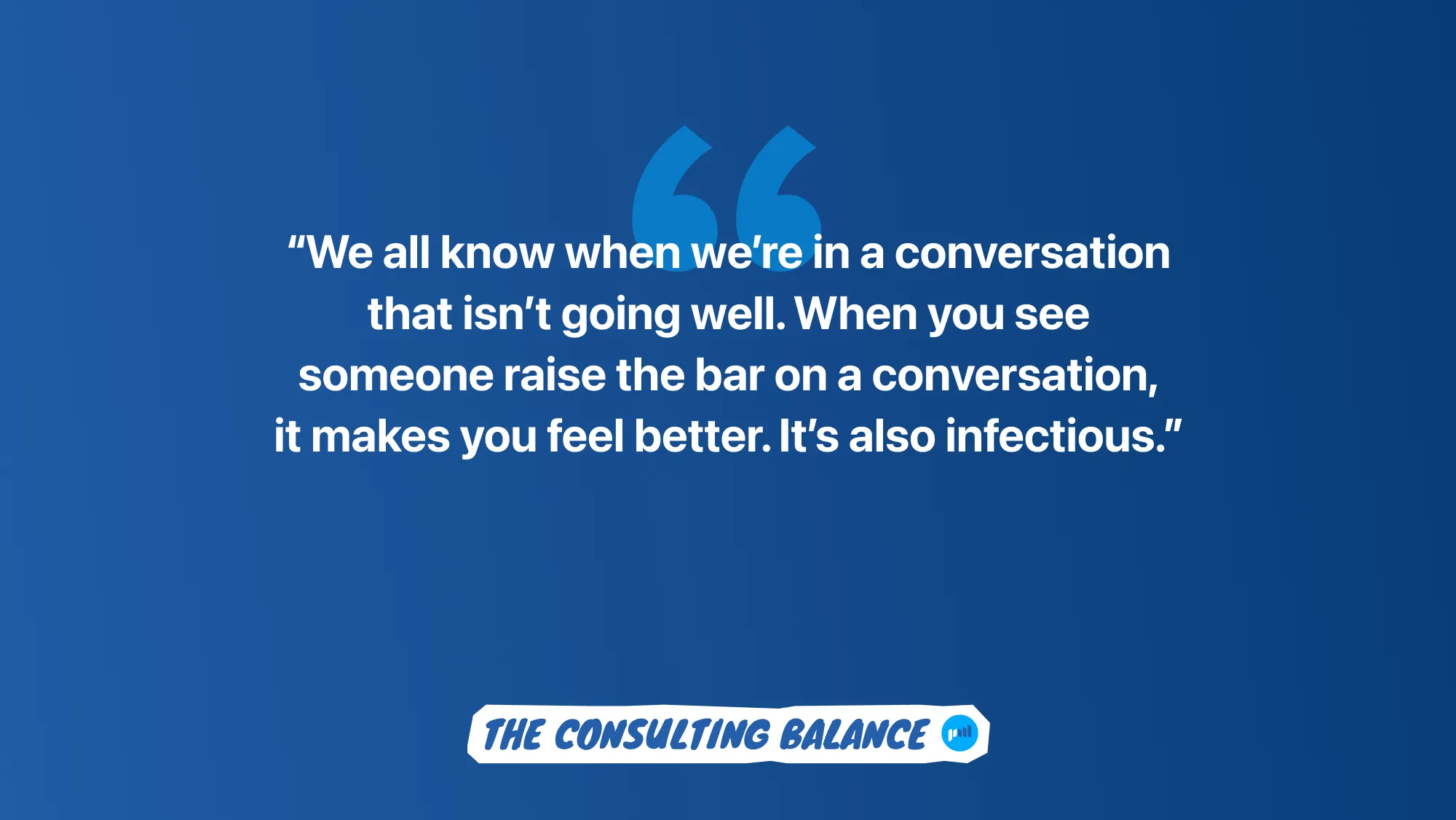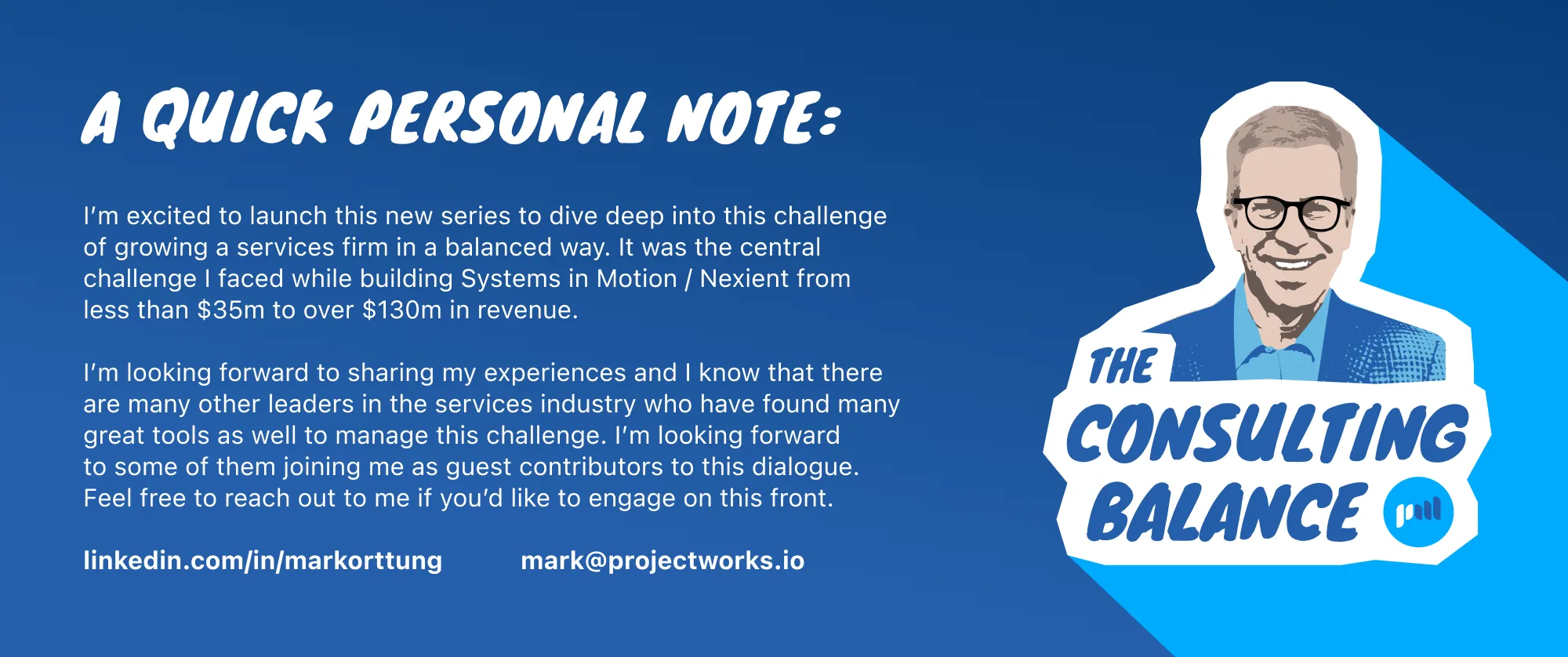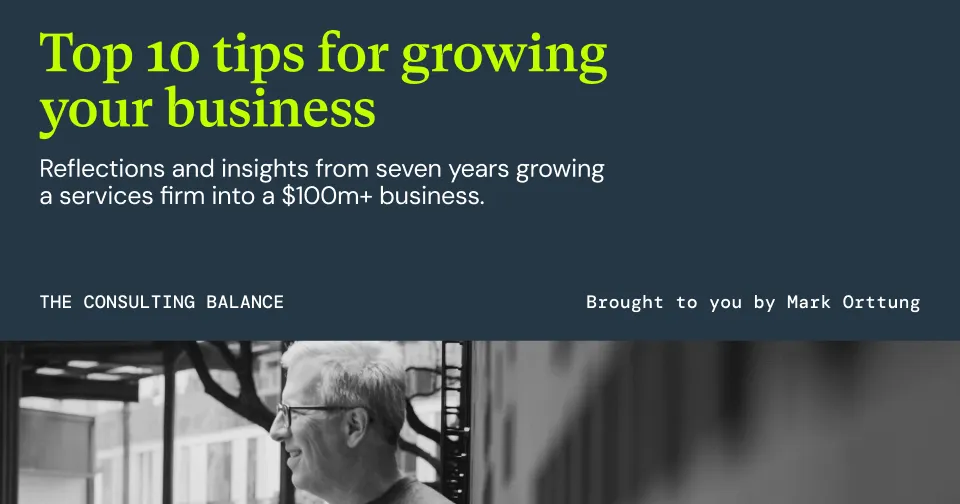The art of adult-to-adult conversation
%2B(1).avif)
Dan Broekhuizen joins Mark to share how they helped their organization communicate like grown-ups.
In this instalment of The Consulting Balance I’m excited to welcome Dan Broekhuizen as my co-author. Dan was a significant leader of Nexient’s people team, incorporating processes that made hugely positive changes to our culture.
When I first joined Nexient in 2014, it was evident that our leadership team didn’t really like or trust each other. In all three interviews for the CEO position I was asked (by three different interviewers) what I thought of the company’s name. Even then I sensed some conflict going on. So when I came on board, changing this negative dynamic was a top priority.
By 2017, we had progressed to where leaders were open to working together. They had moved from a position of distrusting their peers to a more neutral position, but we nevertheless had a long way to go. Across the company there was still a disconnect in communications between leaders, as well as between disciplines. We were communicating, but it was not as effective as it could be.
The culture I was hoping to instill would look something like this:
- Aligned leadership – Leaders would be aligned on where as a team we were taking the company. This included trusting their peers to deliver what they signed up for, then focusing on their own areas to deliver their own results.
- Cross-functional communication – The core of our offering was to deliver cross-functional product teams. To do this we needed product management, UX and engineering to communicate effectively and operate as a team. If our leadership wasn’t doing this, it set the teams up for failure on this front too.
- Communication with clients – We were focused on delivering great software products and applications to clients, but at our core, we were still consultants. We needed everyone on the team to communicate effectively with their day-to-day client contacts. This required an even higher level of trust-building and effective communication. If we didn’t communicate well internally, we’d likely fail in our client communications as well.

A new team leader helped drive change
Around this time, we were looking for a new leader for our people team. I was hoping to find someone who would not only help us with necessities like benefits and human resources, but who could take our culture to the next level too.
I was very lucky to meet with Dan Broekhuizen. His vast experience in human behavior and his inspiring perspective on organizational culture was exactly what I wanted for Nexient. Fortunately he was open to getting on board, remaining a crucial member of the team for over five years.
I’ll let Dan tell the story in his own words…
[Dan]
When Mark and I spoke, we discussed a book we both really liked - Conversational Capacity by Craig Weber. This book spells out the importance of maintaining effective communication, especially in highly charged situations. Open and balanced communication is the basis for any organization to thrive, as no one can do what needs to be done in a vacuum. Open communication is easy, but the “balanced” part is more difficult.
There is a process called "adult-to-adult” that my mentor Paul Doyle from LeaderWork taught me. It is based on the work of Dr. Eric Berne’s “Transactional Analysis” study. Essentially, if an organization is locked into a “parent-to-child” perspective in communication then dignity, respect, and growth cannot happen. It is only when we balance our communications with each other in an “adult-to-adult” way that we can begin to build the trust and openness needed to thrive. Breaking this cycle required us to rethink the way we communicated with each other.
Initially, we ran the leadership team through the adult-to-adult training, emphasizing that although we cannot control the way someone else addresses us, we can control our response to them. We can make sure that our conversation comes from an adult perspective and resist the tendency to respond from either a parent perspective (judgmental and wanting control), or from a child perspective (helpless, rebellious, or indifferent). If our communications come from an adult perspective, there is a good chance we can “pull” others to this perspective as well.
As time progressed, our team was able to use adult-to-adult between each other, and we started to see how it positively affected the teams we were leading. Eventually, adult-to-adult training was implemented across the entire organization and became part of our orientation system.

One of the downstream benefits of an organization that employs adult-to-adult conversations is that it will inevitably affect those outside of your organization too, specifically the families and partners that we go home to and the clients that we serve. When the entire organization understands and practices adult-to-adult communication, you cannot help but have it naturally influence all communication – from 1:1s, town hall meetings, client communications, performance improvement, and even terminations.
Some stand-out feedback I received was how the team felt it helped them with clients. This could be summarized as follows:
We all know when we’re in a conversation that isn’t going well. When you see someone raise the bar on a conversation, it makes you feel better. It’s also infectious. So when someone on our team would raise the bar on a conversation with a client, it impressed both the client and the other members of our team. They’d see this as permission to do the same thing in their conversations with clients.
[Mark]
This allowed us to raise our game on a number of fronts:
- Calling out customers on areas where they gave us requirements which seemed to conflict with the business goals of the project.
- Calling out client team members who might be overly influencing their direction without listening to their customers and teammates. This bought us respect from the rest of the team who were often too afraid to do this themselves. (When you pull people out of a bad day, it’s really powerful.)
- Letting us foster cross-functional communication that is so critical to the model we were delivering. I could see different functions collaborating on difficult issues to find new ways to solve our clients' problems. (This is where the real value of cross-functional teams comes in. Innovative answers usually lie in the space between two or three areas, requiring everyone to stretch to find them.)
Once Dan had rolled out the adult-to-adult communication course, you could see the difference across the organization. Many team members came to me with unsolicited praise for the course and how it had helped them.
- Learn how to communicate internally. If internal comms are not balanced - not adult-to-adult - nothing else works. John Wooden, the famous basketball coach, always said that you play your games the same way you practice. To play well in games, you need to bring your top game to practice every day. Similarly, we needed to bring our best communication skills to our internal work so that when we worked with clients, we could operate in a world-class way.
- How your team talks to your clients is a reflection of how you talk to your team. If you are a parent you probably notice that when you talk with your kids, you sometimes sound like your own parents. It’s like looking in a mirror and why really focusing on the way your team communicates internally is crucial.
- Always exceed your clients’ expectations. Our clients thought they were partnering with us for software development, but we were always looking at how we could help to raise the level of their game generally. Sometimes this would be through more measurable changes like better test coverage or faster releases, but helping change their culture was a compelling leave behind too. You can make your clients better in ways they don’t realize at first. It will lead to them wanting to continue to work with your team in the long run.



.webp)
